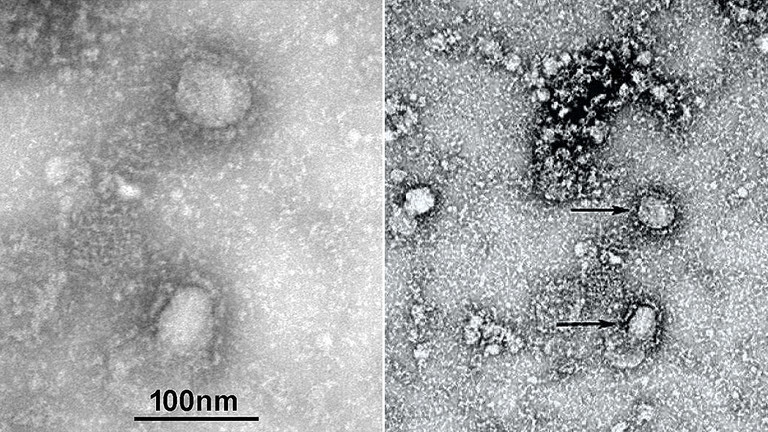Three weeks ago, The Prepared was among the first in the English-language press to report on a new study indicating that SARS-CoV-2 had mutated into a more transmissible form. A more transmissible version of the virus that causes COVID-19 would be the second-worst possible news — second only to a more deadly strain. Given that the paper looked extremely solid, we felt confident enough to sound the alarm in our headline and analysis, but with a few caveats included.
It turns out, though, that the caveats we raised were more important than we initially thought. We may have jumped the gun in taking the study’s conclusions at face value. Specifically, a new preprint analysis of GISAID data by an Anglo-Gallic team of statistical geneticists has put the earlier paper’s transmissibility analysis into serious doubt, suggesting that the widespread mutation probably does not make SARS-CoV-2 more transmissible.
So consider this our mea culpa. In the name of good science and journalistic transparency, we’ll tell you where it looks like the original work went wrong, and how.
What the new analysis does and what it shows
The original paper from Korber et al. demonstrated a recurring pattern of increasing prevalence over time which was suggestive of selection rather than a founder effect. The new paper, from Dorp et al., introduces a new methodology which looks to see if this pattern recurs over different independent emergences of this mutation, and finds that it doesn’t.
That is, D614G probably doesn’t make SARS-CoV-2 more transmissible.
The big question here concerns discerning the difference between selective pressure and founder effects in explaining what causes the prevalence of D614G and potentially other SARS-CoV-2 mutations to increase over time.
Selective pressure is a genuine molecular effect causing a mutated strain to have different properties, while founder effects are the tendency for strains of the virus which enjoy outsized reproductive success by chance to carry mutations along with them, even in the absence of a genuine selective pressure.
The Korber et al. analysis showed not just that the D614G variant increased in prevalence over time, but also that it had a consistent pattern of doing so over multiple geographies and time periods, and argued that this was relatively unlikely to happen due to luck. A founder effect would be geographically and temporally restrained, they argued.
Different methods
In addition to having access to thousands of additional sequences from three additional weeks of GISAID data in the growing pandemic, the new analysis uses a different method. It analyzed many mutations, but restricts itself to recurrent mutations, those which have originated multiple times independently of each other in different lineages of SARS-CoV-2. It introduces a new metric called Ratio of Homoplasic Offspring (RoHO) to measure their effect, which is in theory a more sensitive way of distinguishing between founder effects and genuine selective pressure.
It’s based on the idea that the immediate relatives of the case that originates a new mutation are likely to experience a similar degree of founder effect, but other independent lineages that originate the same mutation (homoplasic lineages) are less likely to. Rather than comparing all the cases with and without the mutation and looking for increased prevalence, it compares each homoplasic strain that carries a mutation with its closest relatives, and looks for a pattern that’s consistent across emergences. This can detect either an enrichment or a depletion.
New results
The results were striking: of dozens of recurrent mutations, none showed a pattern of positive enrichment across all their homoplasic strains, and several showed a negative enrichment, meaning they emerged repeatedly but were actually less transmissible. The D614G mutation showed no enrichment; while its emergences did increase in prevalence, they did so only to the same degree as their nearest relatives which didn’t carry the mutation.
The Dorp analysis also evaluates the sequence nature of these recurrent mutations, and shows that a huge disproportion of them mutate a cytosine base to a uridine base, a pattern which would not be expected from viral replication errors, but could have emerged from the human cell’s own RNA editing system acting on viral RNA. This could partially explain why D614G and some other mutations increased in prevalence; the human host may be introducing it.
This leaves unexplained the clinical results of Korber et al., which showed that the D614G mutation was correlated with higher viral loads in a clinical sample in England. In theory, of course, these results could be a fluke, or the founder effect could have operated by way of an increased viral load (which does tend to transmit serially to some extent) or result from temporal biases of various kinds. It’s hard to know.
How we (probably) got it wrong
The science around COVID-19 is evolving rapidly, as scientists around the world collaborate across borders and disciplines to find the answers to a thousand urgent questions in humanity’s struggle with the pandemic. This has led to some false starts, including early reports of a possible snake intermediary, sequence matches between SARS-CoV-2 and HIV, and the notion that hydroxychloroquine is effective at treating COVID-19.
The theory that D614G increased transmissibility had a lot going for it:
- A repeated pattern of increasing prevalence over time courses and geographies
- A mutation which altered the sequence of the key protein involved in infection of new cells
- A plausible mechanism based on the conformation of the protein
- Seeming indirect confirmation in a clinical cohort
- The imprimatur of some prominent and respected geneticists
When the rest of the press caught the story the week after we went to press, they largely attributed the result to founder effects.
These reports quoted several geneticists saying that the prevalence of D614G was likely due to a founder effect, but without going into detail as to why. We thought that this argument was inappropriately dismissive, and didn’t take the analysis in Korber et al properly into account. But these new results show that this surmise was probably correct, and headline and tone of our article three weeks ago were probably misjudged.
There will be further follow-up work, including in-vitro analyses and possibly more clinical cohort analyses, and while they may clear up some of the remaining mysteries, it’s hard to know what they will show. We’ve also asked for comment from both groups of scientists and from other epidemiologists we’ve corresponded with in the past. These results, however, make it seem much less likely that D614G makes SARS-CoV-2 more transmissible than it seemed when the Korber results came out. We (probably) got it wrong.


You are reporting the comment """ by on